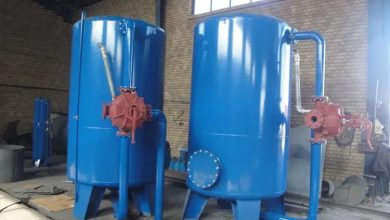Calcium carbonate It is a chemical substance with the formula “CaCO3”.
Buying calcium carbonate powder is an exception. Calcium carbonate (CaCo3) is found in more than 4% of the Earth’s crust. Calcium carbonate is one of the most widely used materials of mankind. This substance can be produced artificially, and of course it is also found in the shell and membranes of animals such as calcium carbonate.
Micronized calcium carbonate powder price is extracted from the mine for use in industry. Pure calcium carbonate can be produced or formed by passing oozing in the solution, and this substance can also be made by pouring baking soda into the solution which settles as a white substance. “Plumbing water must be used to make the solution, otherwise the sodium borate will precipitate in place of the calcium carbonate.” Calcium carbonate is divided into two parts: calcium – Ca – and carbonate – Co -.
Micronized barite powder turns into lime by the heat loss of carbon dioxide, which is used in construction work, in the mining industry and steel production as a smelting aid and for the preparation of calcium carbide. Lime is also used in agriculture to improve soil and adjust pH.
Calcium carbonate is used in industries, especially in the glass industry, because due to its eutectic composition, it reduces the set and when using glazes, glazes.
Calcium carbonate is one of the most widely used minerals, which is used in the paper, plastics, paints and coatings industries as a filler and color coating.
It is valued worldwide in the paper industry for its high brightness and light scattering, and is used as an inexpensive filler to brighten dull paper surfaces.
They also use calcium carbonate to grow mushrooms. But the conditions for their production are different and they are designed to preserve and increase nutrients in the mushroom bed.

Manufacturing and construction materials:
Calcium carbonate is important and necessary in construction both for making materials and as components and molecules. It is also used in construction for laying bricks, concrete blocks, and stones, roofing capping, resin compositing, tile and stucco. Calcium carbonate breaks down carbon dioxide and lime to form a key ingredient in making steel, glass, and paper.
Calcium carbonate is also found in agricultural lime and reduces soil acidity. It also increases plant roots’ uptake of micronutrients such as nitrogen, potassium and phosphorus.
Application in pharmaceuticals[]
Calcium carbonate has antacid properties and is used in the treatment of kidney defects and is a calcium supplement. Calcium carbonate is recommended for patients with hyperphosphatemia with renal failure. Calcium carbonate is used in homeopathic medicines and as a food additive. In addition, since it has the property of calcium carbonate, it is also used as an antidote. Calcite is used to prepare CaCl2, CaBr2, CaI2, and CaO, each of which has many uses in the pharmaceutical industry and is even used in the preparation of veterinary drugs.
Calcium chloride CaCl2 is used to prepare a drug that produces acid in the body, and in cases where calcium ions are low in the body, calcium chloride is used to quickly supply the deficiency. Medicinal calcium chloride compounds are used to treat allergic complications such as itching and other infections caused by allergies.
Calcium chloride speeds up blood clotting and is used to prevent severe bleeding. In addition, this substance is added in the treatment of heart rhythm disorders () as a supplement to medications related to heart failure. Calcium chloride is used to treat diarrhea complications, and it is also used for sweating.
Calcium bromide, CaBr2, is used as an anticonvulsant. This substance is also effective in relieving stomach pain.
Calcium iodide CaI2 is used to prepare ointments against skin diseases.
Natural Resources[]
geological resources[]
The mineral sources are pure calcium carbonate. An important industrial source of calcium carbonate is limestone, which contains and and
biological resources[]
Eggshells, snail shells, and seashells are primarily composed of calcium carbonate and can be used as industrial sources. Edible oyster shells are a nutritional source of calcium, which is also used in industry for this purpose. Dark green vegetables contain a significant amount of dietary calcium carbonate, although the vegetable cannot be used as an industrial source.
Outside of Earth, there is a strong possibility of calcium carbonate. More signs of calcium carbonate have been identified at the site of the Gusev and Huygens craters. This evidence proves the presence of water on Mars in the past.
The steady state calcium carbonate under normal conditions is β-CaCO3 (mineral calcite) with a hexagonal structure. Other structures can be denser (2.83 g/cm3) or λ-CaCO3 (the mineral aragonite) and hexagonal μ-CaCO3 in mines. In this case, it can form through precipitation at a temperature of more than 85 ° C, and if the temperature is about 60 ° C, it forms in a form that has calcium atoms coordinated with six oxygen atoms, while the calcium atoms in aragonite are coordinated with nine oxygen atoms. The structure of vitreous is not fully known.
approved inquiries[]
Encyclopedia of Growth
Calcium carbonate is a chemical substance with the formula CaCO3.
Calcium carbonate is an exceptional mineral. Calcium carbonate, or CaCo3, is found in more than 4% of the entire Earth’s crust. Calcium carbonate is one of the most widely used materials of mankind. This substance can be produced artificially and, of course, is also found in the eggshells and membranes of animals such as snails and crabs. Pearls are also made of calcium carbonate.
Calcium carbonate is extracted from the mine for industrial use. Pure calcium carbonate can be produced from marble or it can be formed by passing carbon dioxide from a solution of calcium hydroxide.
Calcium carbonate is converted into lime by heat with a loss of carbon dioxide, which is used in construction work, in iron mining and steel production as a smelting aid and for the preparation of calcium carbide. Lime is also used in agriculture to improve soil and adjust pH.
Calcium carbonate is used in the tile and ceramic industries, especially in the glass industry. Due to the eutectic composition, it lowers the melting point of the group and when used in glazes, it reduces the coefficient of thermal expansion of the glaze.
Calcium carbonate is one of the most widely used minerals, which is used in the paper, plastics, paints and coatings industries as a filler and as a color coating (because of its special white colour).
It is valued worldwide in the paper industry for its high brightness and light scattering, and is used as an inexpensive filler to brighten dull paper surfaces.
Carbon dioxide detection:
- Lime water turns milky.
- Matchstick extinguishes half lit.
3- Another method is to use gas analyzers, for example, the amount of carbon dioxide gas can be measured using the CEM brand carbon dioxide gas detector model DT-802. In addition to measuring carbon dioxide, this device also measures and displays temperature and humidity.










